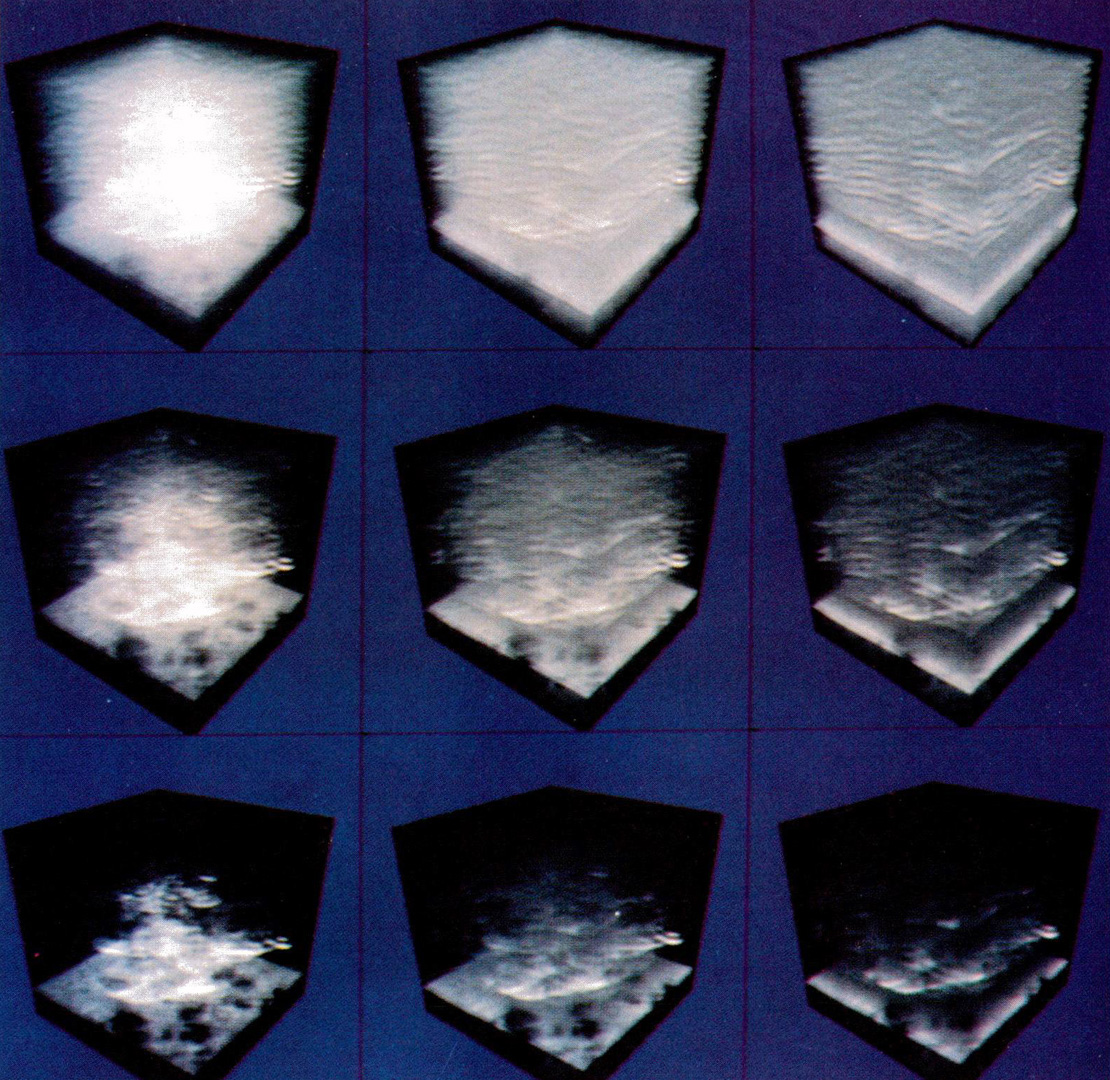“A rendering algorithm for visualizing 3D scalar fields” by Sabella
Conference:
Type(s):
Title:
- A rendering algorithm for visualizing 3D scalar fields
Presenter(s)/Author(s):
Abstract:
This paper presents a ray tracing algorithm for rendering 3D scalar fields. An illumination model is developed in which the field is characterized as a varying density emittter with a single level of scattering. This model is equivalent to a particle system in which the particles are sufficiently small. Along each ray cast from the eye, the field is expressed as a function of the ray parameter. The algorithm computes properties of the field along the ray such as the attenuated intensity, the peak density, and the center of gravity, etc., These are mapped into HSV color space to produce an image for visualization.Images produced in this manner are perceived as a varying density ‘cloud’ where color highlights the computed attributes. The application of this technique is demonstrated for visualizing a three dimensional seismic data set.
References:
1. J. Blinn and M. Newell, “Texture and Reflection in Computer Generated Images,” Comm. ACM, Oct. 1976, pp. 542-547.
2. J. Blinn, “Light Reflection Functions for Simulation of Clouds and Dusty Surfaces”,Computer Graphics 16(3), July 1982, pp. 21-29.
3. L. Chen, G. Herman, R. Reynolds and J. Udupa, “Surface Shading in the Cuberille Environment”, IEEE Computer Graphics and Applications 5(12), December 1985, pp.33-43.
4. W. Dugan, “A terrain and cloud computer image generation model”, Computer Graphics 13(2), 1979, pp.143-150.
5. E. Farrell, “Color Display and Interactive Interpretation of Three- Dimensional Data”, IBM J. Res. Develop 27(4), July 1983, pp.356-366.
6. B. Fishman and B. Schacter, “Computer display of height fields”, Computers and Graphics 5, 1980, pp.53-60.
7. G. Frieder, D. Gordon, R. Reynolds, “Back-to-front Display of Voxel-based Objects”, IEEE Computer Graphics and Applications, 5(1), Jan. 1985, pp.52-60.
8. K. Hohne and R. Bernstein, “Shading 3D-Images from CT Using Gray-Level Gradients”, IEEE Trans. on Medical Imaging MI-5, 1, March 1986, pp.45-47.
9. J. Kajiya, B. Von Herzen, “Ray Tracing Volume Densities”, Computer Graphics 18(3), July 1984, pp.165-174.
10. R. Klassen, “Modeling the Effect of Atmosphere on Light”, ACM Trans. on Graphics, 6(3), July 1987, pp.215-237.
11. W. Lurensen and H. Cline, “Marching Cubes: A High Resolution 3D Surface Constructio n Algorithm”, Computer Graphics 21(4), July 1987, pp. 163-169.
12. X. Mat, T. Kunii, I. Fuhishiro and T. Noma, “Hierarchical Representations of 2D/3D Gray-Scale Images and Their 2D/3D Two-Way Conversion”, IEEE Computer Graphics and Applicalions 7(12), December 1987 pp. 37-44.
13. N. Max, “Light Diffuson through Clouds and Haze”, Computer Vision, Graphics and Image Processing 33, 1986, pp.280-292.
14. D. Meagher. “Geometric Modeling Using Octree Encoding” Computer Graphics and Image Processing 19(2), June 1982, pp 129-147.
15. G. Meyer and D. Greenberg, “Perceptual Color Spaces for Computer Graphics”, Computer Graphics 14, 1980, pp.247-261.
16. W. Reeves, “Particle Systems- a technique for modeling a class of fuzzy objects”, Computer Graphics 17(3), July 1983, pp.359-373.
17. W. Reeves and R. Blan, “Approximate and Probabilistic Algorithms for Shading and Rendering Structured Particle Systems”, Computer Graphics 19(3), July 1985, pp.313- 322.
18. P. Robertson and J. O’Callaghan, “The Application of Scene Synthesis Techniques to the Display of Multidimensional Image Data”, ACM Trans. on Graphics, 4(4), Oct. 1985, pp.247-275.
19. J. Snyder and A. Barr, “Ray Tracing Complex Models Containing Surface Tesseilations”, Computer Graphics 21(4), July 1987, pp.119-128.





